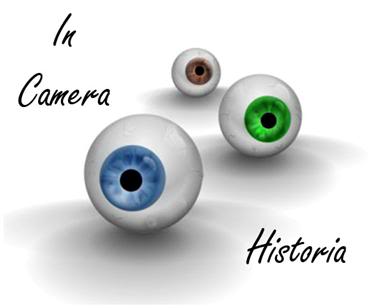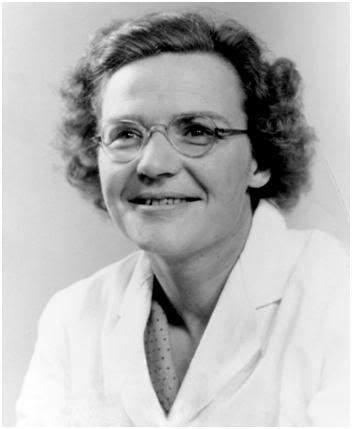
Audrey U. Smith, circa 1960s

Audrey U. Smith (1915–1981), the mother of Cryobiology, was born in India on 21 May 1915. She was educated King’s College, London (first-class B.Sc., 1935); Bedford College for Women (first-class B.Sc. in physiology, 1936); registered for a Ph.D. degree at King’s College (1937); Vassar College (1937–1938); Marine Biological Institute at Woods Hole; King’s College (M.D., 1956). Professional experience: King’s College Hospital, house physician (1942), clinical pathologist (1943–1944); Epsom, public health laboratory, pathologist (1944–1945); Emergency Public Health Laboratory Service, Nottingham, pathologist (1945–1946); National Institute for Medical Research, then at Hampstead, researcher (1946–1970); Royal National Orthopaedic Hospital at Stanmore, staff (1970–1981).
Smith began her research in cryobiology in 1946 at Mill Hill in Britain’s Medical Research Council (MRC). Working with Sir Alan Parkes and Christopher Polge Smith attempted to develop a workable cryopreservation technique for animal semen. After many failed efforts Smith had success, however attempts to replicate the feat using the concentrated egg albumen that had previously conferred cryoprotection were unsuccessful. Smith noted that the particular bottle of albumen that had yielded success was not the one used in the subsequent, unsuccessful experiments and she undertook to analyze it. As she prepared to evaluate the contents of the bottle she accidentally dropped it in a laboratory sink where it shattered. As the bottle broke, a droplet of the liquid it contained traveled “in a long arc” from the sink where it landed on a laboratory hot plate. The result was a pungently acrid puff of smoke. Smith immediately recognized the odor of acrolein in the smoke; acrolein is a primary pyrolysis product of glycerol.
Hypothesizing that bottles in the chemical cupboard may have become mixed up – perhaps two loose labels had been affixed to the wrong bottles – Smith decided to try glycerol in the next round of experiments. This proved successful, and thus the first practical cryoprotectant molecule was discovered. Smith quickly extended her initial success with fowl semen to bull and human semen. This led to the development of the artificial insemination industry for dairy cattle, and the creation of human sperm banks, which were initially used as a resource primarily for married couples where the husband was infertile.
The impact of artificial insemination (AI) on milk production has been astonishing. Mostly as a result of AI, annual milk production per cow in the US has risen from 252.27 kg (13,555 lbs) in 1961 to 9,164.4 kg (20,204 lbs) in 2007, exclusive of the milk consumed by cow’s the calves. This is the primary reason why milk remains a highly affordable foodstuff and that it and its byproducts can be produced in vast surplus for export to the developing world as a major source of high quality protein.
Smith and her colleagues extended their work to tissue culture, and to a wide range of cells and tissues, including mammalian ovaries and embryos. In 1950, Smith published a paper documenting the successful cryopreservation of red blood cells. Smith expanded this technique into a workable method for cryobanking red blood cells for transfusion – a technique that is still in use to treat anemia from a variety of causes. Smith was also the first to achieve successful cryopreservation of lymphocytes and of bone marrow stem cells. The latter discovery is responsible for the existence of contemporary bone marrow banks and thus the feasibility of heterologous bone marrow transplantation in medicine.
In addition to her work on cryoprotection and the mechanics of cryoinjury, Smith, along with Sir James Lovelock and Alan Parkes, published an extraordinary series of papers documenting the ability of the golden hamster to withstand conversion of ~ 50% of their body water into ice and recover with no lasting harm. Smith and Lovelock extended this to work to rabbits and galagoes (a small primate) demonstrating acute success, but not long term survival of the animals.
In 1967 Smith was appointed head of the Division of Low Temperature Biology of the Clinical Research Centre. However when the Centre moved from Mill Hill to Harrow in 1970, Smith did not move with it due to her strong ethical objections to the application of cryopreservation to human embryos. Whilst Smith had worked closely with Robert Edwards and Patrick Steptoe, who were the first to achieve in vitro fertilization and cryopreservation of human embryos (with the birth of Louise Brown in 1978, in Oldham) she was virulently opposed to the cryopreservation of human embryos. When Smith headed the Division of Low Temperature Biology she successfully petitioned Sir Charles Harrington, then Director of the MRC, to ban all in vitro fertilization research on humans.
Smith strongly disapproved of cryonics and had such antipathy towards the father of cryonics, Robert Ettinger, that she would refer to him in conversation only as “that man.” Smith died of cancer in 1981 in Stanmore, which is located in Northwest London.
Selected Bibliography
A. U. Smith. Prevention of Haemolysis during Freezing and Thawing of Red Blood Cells.” Lancet 2 (1950):910–911.
A. U. Smith, J.E. Lovelock, A. S. Parkes. Resuscitation of hamsters after supercooling or partial crystallization at body temperature below 0 degrees C. Nature. 1954 Jun 12;173(4415):1136–1137.
C. Polge, A. Smith, and A. Parkes. Revival of spermatozoa after vitrification and dehydration. Nature (London), 164:666, 1949.
D. E. Pegg. The history and principles of cryopreservation. Semin Reprod Med, 20(1):5–13, 2002.
A. U. Smith. Biological Effects of Freezing and Supercooling, Williams and Wilkinns, London, 1961.

a story episode of Great hindu Mahabharat states of about Duryodhan that he made the water still by changing into ice.he lived for about 6 months.what does this mean? Is it the same thing i guessing for deep freezing the whole boly?